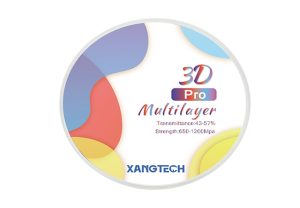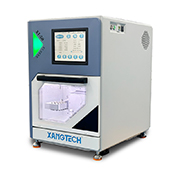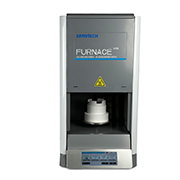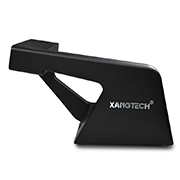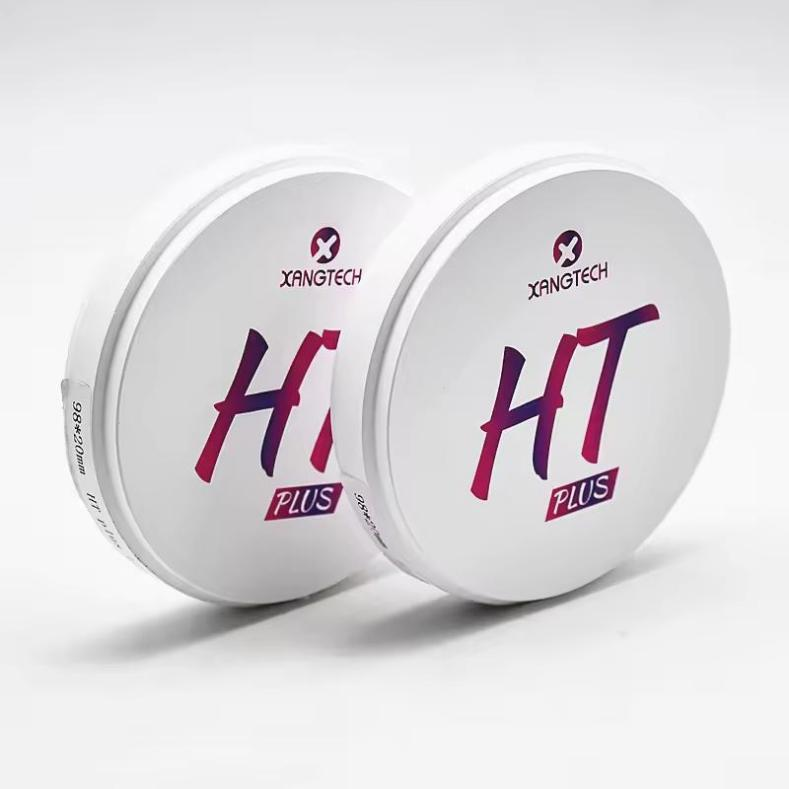Introduction to Dental Zirconia Blocks
Dental zirconia blocks have become an integral part of modern dentistry, offering a range of applications and advantages that enhance the effectiveness of dental restorations. These materials are engineered to provide both aesthetic appeal and structural integrity, making them a popular choice among dental professionals. Understanding the different types of zirconia blocks and their specific applications is essential for dentists and dental technicians aiming to deliver high-quality care.
The Growing Importance of Zirconia in Dentistry
The dental industry has witnessed a significant shift toward the use of zirconia materials in recent years. As patients demand restorations that are not only durable but also visually appealing, zirconia has emerged as a favored option. Its biocompatibility and resistance to wear contribute to its growing importance. Moreover, the ability to fabricate restorations effectively using Computer-Aided Design and Computer-Aided Manufacturing (CAD/CAM) technology has further propelled zirconia into prominence, enabling faster production times and improved outcomes.
Benefits of Using Zirconia Blocks
Zirconia blocks offer a range of benefits that make them highly suitable for various dental applications. They boast excellent mechanical properties, including high strength and fracture toughness, which lend themselves well to demanding environments in the oral cavity. Additionally, zirconia is known for its aesthetic qualities, allowing for the creation of lifelike smiles. Its versatility means it can be used in various situations, from single crowns to complete arch restorations, making it a reliable choice for many dental professionals.
Types of Dental Zirconia Blocks
Monolayer Zirconia Blocks
Monolithic zirconia blocks are known for their exceptional strength and durability, making them an ideal choice for posterior restorations and frameworks for bridges. These blocks are solid and do not have a layered structure, which simplifies the manufacturing process and enhances their overall stability. Their ability to withstand significant occlusal forces while providing a natural appearance makes monolithic zirconia a preferred option in many dental practices.
Characteristics of Monolithic Zirconia
Monolithic zirconia blocks typically feature a uniform color and a lower translucency level compared to other types of zirconia. With a high strength rating, they can endure the stresses of biting and chewing effectively. While the aesthetic quality may not match that of layered materials, advancements in manufacturing processes have allowed for improved translucency in certain monolithic formulations, providing a satisfactory balance between function and appearance.
Common Applications for Monolithic Zirconia
The primary applications of monolithic zirconia blocks include posterior crowns, bridges, and implant frameworks. Their exceptional mechanical properties make them suitable for areas subject to high chewing forces. Additionally, they can be utilized in custom abutments, inlays, and onlays, showcasing their versatility within various restorative protocols.
multilayer Zirconia Blocks
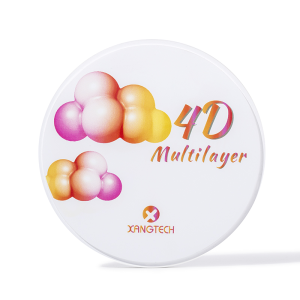
Unlike monolithic zirconia, multi-layered zirconia blocks are engineered to feature varying degrees of translucency and color gradients, closely mimicking the natural appearance of teeth. This innovative design allows for improved aesthetics while maintaining the material’s strength. Multi-layered zirconia is particularly beneficial in the anterior region, where aesthetics play a critical role.
Features of Multi-layered Zirconia
Multi-layered zirconia blocks exhibit distinct aesthetic properties, with a gradient of colors that replicates the appearance of natural dentin and enamel. The outer layers of the block can display higher translucency, providing visual depth, while the inner layers contribute to the strength needed for durability. This combination permits dental professionals to achieve lifelike restorations that blend seamlessly with adjacent natural teeth.
Uses and Advantages in Dental Practices
Multi-layered zirconia blocks are frequently used in anterior crowns and veneers, where aesthetics are of utmost importance. They offer dental practitioners the ability to create restorations that not only meet functional requirements but also enhance the patient’s smile. Additionally, the high strength of multi-layered blocks makes them a dependable option for various indications, ensuring longevity and performance.
Pre-Shaded Zirconia Blocks
Pre-shaded zirconia blocks are designed to save time in the dental laboratory by incorporating color into the manufacturing process. This innovation allows for a more efficient workflow, reducing the need for staining and glazing after milling. These blocks provide a range of color options that can match the natural hues of a patient’s dentition.
Overview of Pre-Shaded Zirconia Options
Pre-shaded zirconia blocks come in various colors that correspond with popular VITA shade guides. The availability of diverse shades allows for tailored restorations that match the patient’s natural tooth color closely. Additionally, the inherent properties of these blocks ensure that aesthetics and durability are achieved in one single step.
Practical Applications for Color-Match Needs
These pre-shaded blocks are particularly useful for full contour restorations, bridges, and aesthetic anterior crowns. Since the color is integrated into the block, the final outcome mirrors the natural appearance of teeth while benefiting from the strength of zirconia materials. This means dental professionals can deliver aesthetically satisfying restorations without compromising on strength and functional longevity.
Quality and Composition of Dental Zirconia Materials
Key Properties of High-Quality Zirconia
High-quality zirconia is crucial for achieving optimal performance in dental applications. The key properties of this material include high flexural strength, excellent fracture toughness, and outstanding wear resistance. These characteristics allow zirconia blocks to withstand the demanding conditions of the oral environment while maintaining their structural integrity and aesthetic quality throughout their lifespan.
Factors Affecting Material Performance
Several factors can influence the performance of dental zirconia materials, including the manufacturing process, chemical composition, and sintering conditions. The integration of advanced technologies, such as the use of CAD/CAM systems in milling and the application of appropriate sintering temperatures, plays a significant role in enhancing the qualities of zirconia. The direct manufacturing capabilities of companies, such as XANGTECH, have also enabled the delivery of high-quality zirconia blocks with consistent performance, supporting dental practices in providing superior patient care.
Selecting the Right Zirconia Block for Different Procedures
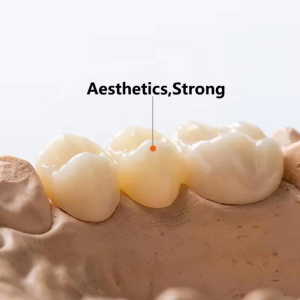
Criteria for Choosing the Appropriate Type
When selecting a zirconia block for a specific dental procedure, several key criteria should be considered to ensure optimal outcomes. One of the primary factors is the mechanical properties required for the restoration. This includes assessing the bending strength and fractural toughness, which are crucial for areas that experience significant occlusal forces. Another important consideration is the aesthetic requirements; for anterior restorations, a higher translucency may be needed to closely mimic natural teeth. Finally, compatibility with fabrication techniques, such as CAD/CAM, must be ensured, as this can influence both the efficiency of the milling process and the final fit of the restoration.
The intended use of the zirconia block also plays a pivotal role in the selection process. For example, monolithic blocks might be favored for posterior crowns where durability is critical, while multi-layered or pre-shaded blocks are more suitable for anterior cases that require superior aesthetics. Additionally, the dental practitioner must consider the specific preferences and needs of the patient, including any allergies or sensitivities to materials. By evaluating these criteria thoroughly, clinicians can make informed choices that enhance the success of dental restorations.
Matchmaking: Procedure-Specific Recommendations
Different types of zirconia blocks are recommended based on the specific dental procedure being performed. For instance, monolithic zirconia blocks are particularly advantageous for posterior crowns and bridges due to their robust mechanical properties, making them an excellent choice for areas with high chewing loads. Meanwhile, multi-layered zirconia blocks excel in anterior applications where aesthetics are paramount; their variable translucency provides a natural appearance that can significantly improve the patient’s smile.
In scenarios where time efficiency is important, pre-shaded zirconia blocks can be utilized for full contour restorations as they eliminate the need for additional staining or coloring, streamlining the workflow within the dental laboratory. Additionally, for custom abutment fabrication and implant-supported restorations, both high-strength multi-layered and monolithic options are viable, each offering unique benefits that can meet both aesthetic and functional demands. By aligning the type of zirconia block with the specific requirements of dental procedures, practitioners can achieve optimal results and patient satisfaction.
Innovations in Zirconia Block Technology by XANGTECH
Introduction to XANGTECH’s Zirconia Products
XANGTECH has established itself as a key player in the dental industry by providing high-quality zirconia blocks that meet the evolving needs of dental practitioners. With over ten years of experience as a direct manufacturer, XANGTECH has honed their product offerings to ensure exceptional quality and consistency. Their zirconia blocks are produced with advanced manufacturing techniques, yielding a monthly output of 60,000 pieces, which highlights their capacity to supply dental labs and practices efficiently.
The variety offered by XANGTECH includes monolithic, multi-layered, and pre-shaded zirconia blocks, each designed to cater to the specific requirements of various dental applications. By focusing on factors such as mechanical strength, aesthetic appeal, and ease of use, XANGTECH’s products are crafted to enhance the workflow in dental laboratories while ensuring superior performance in clinical practice.
Unique Features and Advancements Offered by XANGTECH
XANGTECH’s zirconia blocks are distinguished by several unique features and technological advancements. One of the primary advantages is the high translucency and strength of their multi-layered zirconia blocks, which can achieve a bending strength of around 1250 MPa while maintaining a translucency level suitable for anterior restorations. This allows dental professionals to create lifelike crowns and bridges that not only perform well but also blend seamlessly with natural dentition.
Additionally, XANGTECH offers pre-shaded zirconia blocks that significantly reduce processing time in dental laboratories. The pre-integration of color into the blocks enables labs to deliver aesthetically pleasing restorations promptly, eliminating the need for staining or glazing. This innovation is particularly beneficial for practices looking to enhance efficiency without compromising on the quality of the restoration. With a commitment to continuous improvement and customer satisfaction, XANGTECH remains at the forefront of zirconia block innovations in the dental field, supporting practitioners in their quest for excellence in patient care.
Practical Insights on Using XANGTECH’s Zirconia Blocks
Best Practices for Handling and Machining
When working with XANGTECH’s zirconia blocks, proper handling and machining techniques are essential to maximize their performance and durability. It is advised to employ protective gear while handling these materials, as they can be fragile before sintering. Dentists and technicians should ensure that the surfaces of zirconia blocks are clean and free from contaminants to avoid any inconsistencies during the milling process. Utilizing CAD/CAM systems can greatly enhance precision, but operators must be vigilant about milling machine settings to align with the specified requirements of XANGTECH’s zirconia products.
In terms of machining, it is crucial to use diamond-coated burs, as they are specifically designed to mill zirconia materials effectively. Care should be taken to maintain appropriate speed and pressure; excessive force can cause chipping or fracturing of the zirconia. Regular maintenance of milling equipment is also suggested to avoid dull tools that can negatively impact the quality of the finished restoration. Implementing these best practices can lead to smoother workflows and higher-quality restorations.
Maintenance Tips for Long-lasting Prosthetic Restorations
Proper maintenance of zirconia restorations will significantly enhance their longevity and performance in a patient’s mouth. Regular dental check-ups are essential to ensure that the restorations remain intact and function as intended. During these visits, dental professionals can assess the integrity of the zirconia, checking for any signs of wear or fracture. Patients should be educated on the importance of maintaining good oral hygiene to minimize the risk of plaque buildup and gum inflammation around zirconia appliances.
In addition to oral hygiene, it is advisable to avoid using abrasive cleaning agents or tools when caring for zirconia restorations. A soft-bristle toothbrush along with non-abrasive toothpaste should be recommended to prevent scratching the surface. For deeper cleaning, ultrasonic cleaners designed for dental applications can be employed, ensuring that they are compatible with zirconia materials. By adhering to maintenance guidelines, both dental practitioners and patients can ensure that prosthetic restorations maintain their functionality and aesthetic appeal over time.
Future Trends in Dental Materials
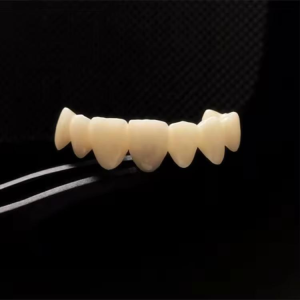
Emerging Technologies in Dental Restoration
The dental field is continuously evolving, and advancements in technology are significantly shaping the future of dental materials, including zirconia blocks. One of the most noteworthy trends is the ongoing integration of artificial intelligence (AI) in the design and manufacturing process of dental restorations. AI has the potential to optimize design processes and predict material behavior based on specific clinical applications. This progress will not only enhance restoration precision but also render custom solutions readily available for unique patient needs.
Another exciting development is the pursuit of bioactive materials that can promote tissue regeneration and integrate better with natural dental structures. The concept of zirconia blocks infused with bioactive elements is under exploration, aiming to create restorative materials that support healing. Furthermore, the continuous innovation in 3D printing is revolutionizing how dental restorations are fabricated and bringing 3D multilayer zirconia block, allowing for quicker production times and customization at unprecedented levels. As these technologies mature, they stand to change the landscape of dental restorations, presenting new opportunities and challenges for practitioners.
How XANGTECH is Pioneering Future Developments
XANGTECH is at the forefront of innovation in dental zirconia materials, employing advanced manufacturing techniques and a customer-centric approach to product development. Their commitment to research and development enables them to stay ahead in an industry that is rapidly changing. By focusing on producing high-quality zirconia blocks that incorporate the latest advancements, XANGTECH addresses the evolving needs of dental professionals and ensures they have access to reliable materials for diverse applications.
Moreover, XANGTECH is embracing sustainability by exploring eco-friendly practices in their production processes. This initiative reflects a growing awareness in the dental field regarding environmental responsibilities. Their proactive approach not only enhances patient care but also contributes positively to the industry as a whole. By continually pushing the boundaries of what is achievable with dental materials, XANGTECH is set to play a crucial role in shaping the future of dental restorations, all while maintaining their high standards for quality and efficiency.

